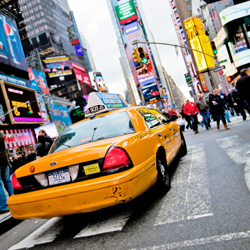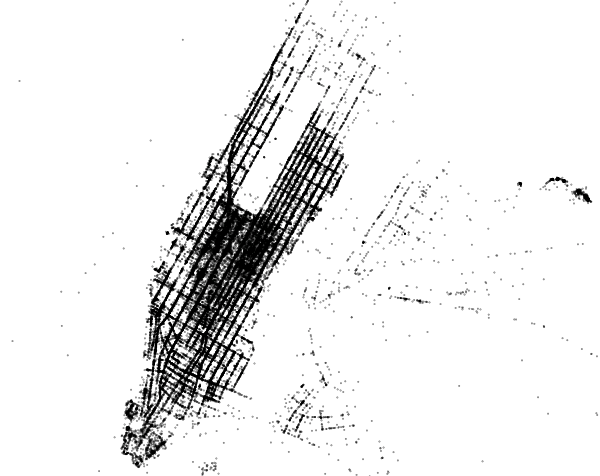
Since its launch in New York in the beginning of March, the app has been installed on thousands of New Yorkers phones. They have responded enthusiastically to the arrival of the app which will let them know – in real time – the most economic option on their taxi commutes. Tim O’Reilly, the father of open source, endorsed the app recently with a tweet.
Super-interesting. Data Mining Reveals When A Yellow Taxi Is Cheaper Than Uber http://t.co/rL3klGmhaL Nice work, @openstreetcab!
— Tim O’Reilly (@timoreilly) March 17, 2015
This signals the importance of similar innovative projects as we enter the era of big, and hopefully open data. But what is so unique about OpenStreetCab and moreover what technologies doesit employ to power its users? The story dates back to July 2014 when Chris Whong walked into the offices of the Yellow Cab Company in New York and, under the freedom of information law, asked for the journey records of yellow taxis in the city during 2013. This way, data not only about the urban whereabouts of taxis became available, but critically – data describing the fares paid by taxi customers emerged.
The dataset (visualised in the image below) now lies at the heart of OpenStreetCab which exploits historic knowledge about the journeys of yellow taxi commuters and directly compares it with the corresponding price of an Uber X cab (Uber X is the cheapest taxi service provided by Uber).

A sample of the digital traces left by yellow cabs in New York during 2013.
Screenshots from the app on the right show the three (and only) snapshots of the app that users can view. When an OpenStreetCab user opens the app an interface is provided where they can input the origin and destination address of their taxi trip.
{mbox:/significance/2015/graphs/open-street-cab-userx.png|width=300|height=178|caption=Click to enlarge|title=A user perspective of OpenStreetCab. As shown in the snapshots above users can set their trip and destination address as they open the application. By pressing a button they receive a consultation on the cheapest taxi provider for their trip.}
When the user presses the button ‘Uber or Yellow Cab?’, the query input is pushed to a server where Uber and yellow taxi prices are compared. If Uber is cheaper for the preferred trip, then a black screen is set on the phone of the user with the message ‘Take Uber’.
However, if a yellow cab is cheaper for that journey, the phone’s screen is painted yellow and the message is ‘Take a Yellow Cab’. And that is all. Minimalism in design is thus key to the app’s functionality which aims to provide the user with the wanted response at minimum cost in terms of interactions.
This way, OpenStreetCab has won the heart of early adopters in New York who have helped it climb to the sixth position of the most popular apps in category transport in the United States.
But what lies ahead for the OpenStreetCab team, who are keen to keep working hard to satisfy the expectations of the OpenStreetCab user community? First and foremost is the need to expand to other urban territories. Much of the feedback returned so far corresponds to calls that ask to launch OpenStreetCab in other cities. The possibility to see the app in other big cities where taxi transport is popular such as Dallas, San Francisco, Chicago and Los Angeles will depend much on the availability of similar open taxi datasets by the local authorities.
Privacy concerns with regard to the journeys performed by taxi drivers are an important issue to be taken into account when such datasets become public. To counter these there are several proposals from the scientific community for ways to process these datasets appropriately so risks on the privacy of individuals are minimised and a balance between the value in terms of data extracted and those risks is maintained. Moreover, citizens themselves – including many of the taxi drivers whose lifetime efforts depend on the destiny of the taxi industry – are keen to see these data being shared so that innovative services can be built to support their interests.
Besides the geographic expansion of its services, the OpenStreetCab data science team are busy analysing the data generated through the service to understand better the complex factors that determine the cheapest taxi providers in the city. Those factors include location, time, weather and traffic conditions alongside demand for Uber drivers that, anecdotally, is known to determine the surge pricing patterns that the company puts forward.
For example, take the visualisation below. Each hour of the week has been coloured in a yellow or black stripe, depending on whether the majority of Uber or yellow cabs rides were cheaper for the hour in question.
{mbox:/significance/2015/graphs/yellow-cab-vs-uber.png|width=630|height=153|caption=Click to enlarge|title=A snapshot of 168 hours in a week, coloured yellow or black depending on whether a yellow cab or an Uber offered the cheapest deal.}
Insight on these matters will be provided first hand for the attendants of this year’s NetMob conference to take place in April at MIT’s Media Lab where the OpenStreetCab team has programmed its official application launch.



